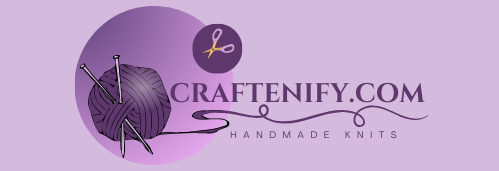The ability to write permanently on metal is a sought-after skill for a variety of applications, ranging from industrial labeling to bespoke jewelry making. Whether the aim is to add a personalized touch to a cherished item, clearly identify tools and equipment, or intricately decorate metal surfaces, knowing how to write on metal permanently is invaluable.
This document explores the numerous methods available for achieving permanent markings on metal surfaces. Each technique offers different levels of permanence and is suitable for various applications, depending on the project’s requirements. From traditional engraving to modern laser etching, the choice of method impacts the durability, visibility, and aesthetic outcome of the marking. Understanding these options allows for informed decision-making when planning a permanent metal marking project.
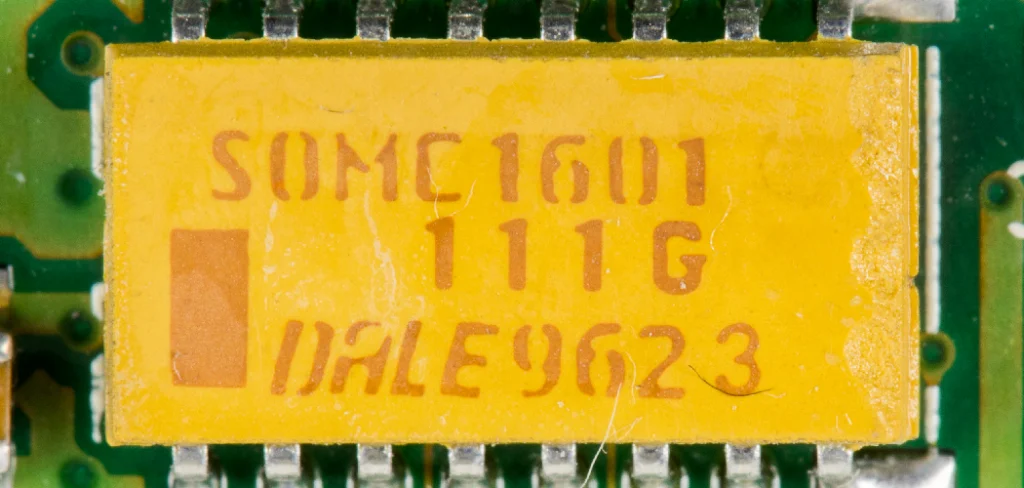
Defining Permanent Marking on Metal
Permanent marking on metal refers to any method used to inscribe text, designs, or identifiers on metal surfaces to ensure longevity and resistance to wear over time.
Unlike temporary or easily removable markings, such as those made with paint or chalk, permanent markings are intended to withstand environmental factors, handling, and surface treatments without significant degradation. The permanence of a mark on metal is influenced by several key factors, including the method employed for marking, the mark’s depth and quality, and the metal’s characteristics.
The chosen method for marking—be it engraving, stamping, laser etching, or acid etching—plays a crucial role in determining how enduring the mark will be. Techniques that physically alter the metal surface by removing material or modifying its structure tend to offer greater permanence. The depth of the mark further contributes to its durability; deeper marks are less susceptible to being worn away by friction or surface treatments.
Finally, the type of metal, including its surface finish and hardness, can affect how well the mark holds up over time. Harder metals may retain marks better, but they require more robust methods to mark effectively.
Conversely, metals with protective coatings or treatments may pose challenges for certain marking techniques but could potentially offer enhanced preservation of the marking by protecting it from external factors.

Exploring Permanent Marking Methods
Mechanical Methods
Engraving
Engraving involves using a sharp tool or an engraving machine to etch or carve designs directly into the metal surface, creating deep, permanent grooves. The depth of the engraving is a critical factor in its permanence, as deeper cuts are less likely to wear away over time.
This method requires a skilled hand or familiarity with machinery, making the skill level a significant consideration. Engraving is versatile, suitable for various metals, and offers a high level of detail, making it ideal for both functional and decorative applications.
Stamping
Metal stamping employs pre-formed stamps and a hammer to imprint raised or indented letters, numbers, or designs onto metal surfaces. This method is straightforward but requires precision to align the stamps and apply uniform pressure.
The variety of stamps available, including letters, numbers, and symbols, offers considerable versatility. However, the technique has limitations, including potential misalignment and variability in impression depth across different types of metal, affecting the overall uniformity and aesthetics of the marks.
Scratching
Scratching is a rudimentary form of marking that involves using a sharp tool to inscribe information onto metal. This method best suits soft metals and scenarios requiring quick, temporary identification rather than long-term durability. The simplicity of scratching means it can be done with minimal equipment, but the resulting marks are generally less permanent and can easily degrade through regular wear and environmental exposure.
Chemical Methods
Acid Etching
Acid etching uses a chemical solution to selectively dissolve parts of the metal surface, creating a permanent mark. This process can achieve intricate designs but requires careful handling of hazardous materials, adherence to safety protocols, and proper ventilation.
While acid etching offers precision and permanence, its effectiveness can vary based on metal type and the acid’s concentration, posing challenges in achieving uniform results. The need for protective equipment and knowledge of chemical handling limits its accessibility and safety for amateur users.
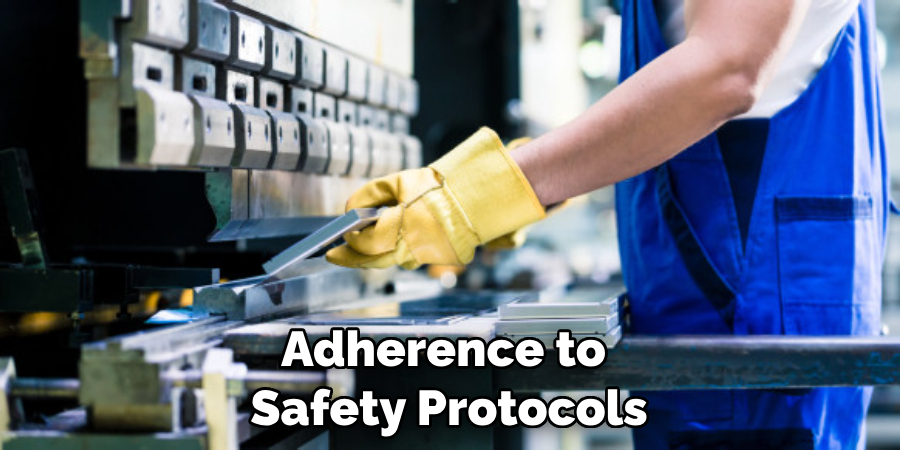
Electrochemical Etching
Electrochemical etching is a method that combines electrical current and a chemical solution to mark metal. Specialized equipment is needed to control the reaction, which selectively removes metal to create a mark.
This technique is valued for its precision and ability to create permanent, detailed marks without significant mechanical or thermal stress on the metal. However, the requirement for specific equipment and expertise means electrochemical etching is less suited for hobbyists and is generally reserved for professional settings.
Other Methods
Laser Engraving
Laser engraving stands out for its accuracy and permanency, utilizing a concentrated laser beam to vaporize the metal surface selectively. This method creates highly detailed and precise markings for intricate designs and fine text.
Laser engraving’s main limitations include its high cost and the need for professional-grade equipment, making it less accessible for small-scale projects or individuals. Despite this, its unmatched precision and permanence make it popular for commercial and high-end custom work.
Welding
Welding as a marking method involves melting the metal surface to form a permanent mark or inscription. This technique requires specialized skills and equipment for safe and effective application, offering a unique method for creating durable marks on metal.
The physical alteration of the metal surface through melting ensures the permanence of the mark but also restricts this method to applications where structural and aesthetic changes to the metal are acceptable. Welding for marking is best suited for industrial applications where durability outweighs considerations of surface finish or detail.

How to Write on Metal Permanently: Engraving for Permanent Marking
1. Materials and Tools:
To begin engraving, one needs essential tools such as an engraving pen, a rotary tool with an engraving bit, or the traditional hammer and chisel for deeper cuts. Safety glasses are crucial to protect eyes from metal shards, and gloves safeguard hands during the process.
A workbench or vise is indispensable for holding the metal piece securely, ensuring stability as you work. Optionally, a marking pen could be used for preliminary design outlines. These tools combined allow for precise and safe engraving on various metal surfaces.
2. Preparing the Metal Surface:
Prior to engraving, it’s imperative to properly prepare the metal surface. Cleaning and degreasing the metal ensures that the surface is free of oils and dirt, which could otherwise affect the adhesion and visibility of the engraved mark. Methods range from simple wiping with a clean, lint-free cloth and suitable cleaning agent to more involved degreasing agents for heavier residues. This step is vital for achieving a clear, permanent mark that stands the test of time.
3. Creating the Design:
Using a marking pen or stencil is an effective way to outline the design or lettering faintly before engraving. This preliminary sketch acts as a guide, ensuring the final outcome aligns with your vision. Stencils can provide the uniformity and accuracy needed for more intricate designs or precise lettering. This step allows for adjustments and placement checks before permanently altering the metal surface.
4. Engraving Techniques:
With the design in place, the actual engraving begins using the chosen tool. The key is to create clean, consistent lines, carefully following the marked outline when applicable. Maintaining a firm but comfortable grip on the tool is important, ensuring control at all times.
Additionally, always direct the tool away from yourself to avoid injury, and work in a well-ventilated area to avoid inhaling any metal dust. Different techniques, such as varying the angle or pressure, can produce different depths and styles of marks, allowing for a range of artistic expressions within the medium. Safety never takes a back seat – always wear protective gear and be mindful of your surroundings.
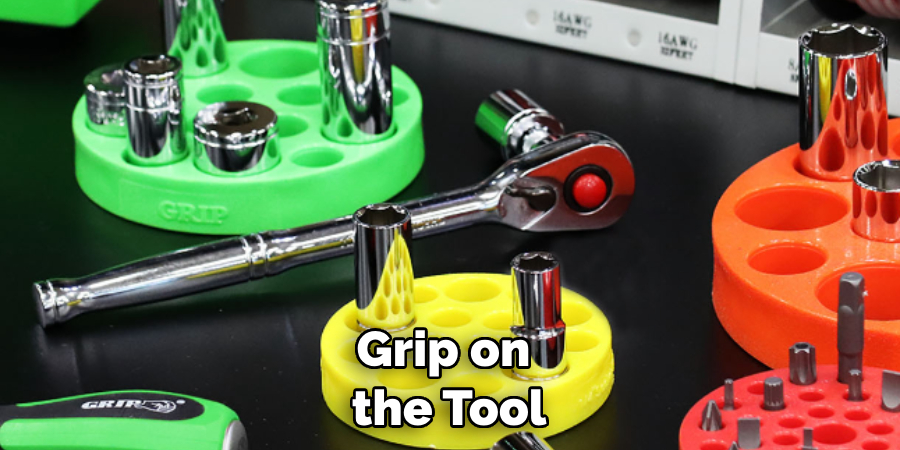
How to Write on Metal Permanently: Metal Stamping for Permanent Marking
1. Materials and Tools:
For metal stamping, the essential tools include metal stamps, which can be individual letters, numbers, symbol stamps, or a comprehensive set encompassing various characters. A sturdy hammer is required to apply the necessary force, while a metal block or an anvil provides a solid support underneath the workpiece.
Safety equipment is crucial to protect the user during the stamping process; safety glasses shield the eyes from potential metal shavings, and gloves protect the hands from sharp edges on the metal surface and the impact of the hammer. These tools and materials together facilitate the creation of clear, permanent marks on metal surfaces.
2. Choosing the Right Stamps:
The selection of metal stamps should reflect the desired outcome in terms of font style, character size, and the specific requirements of the stamping technique, whether using individual stamps or a set. Font style affects the aesthetic appeal and readability of the stamped message, while character size must be appropriate for the available space and the scale of the project.
Compatibility with the stamped metal is also crucial, as some stamps are designed for softer metals and might not perform well on harder surfaces. The choice of individual stamps versus a set depends on the frequency of use and the variety of characters needed for different projects.
3. Positioning and Stamping:
Accurate positioning is key to achieving a professional-looking result in metal stamping. For individual letter stamps, this involves carefully placing each stamp at the desired location on the metal surface, ensuring alignment and even spacing between characters. When using a stamp set, align the entire set to ensure uniformity before making the impression.

The stamp is then struck firmly with the hammer, applying consistent force to create a clear and consistent impression. Repeat the process for each character, maintaining steady hand pressure and alignment to ensure a neat and legible finish.
Professional Methods for Permanent Marking
Laser Engraving:
Laser engraving stands as a pinnacle of precision in the arena of permanent marking on metal surfaces. This method employs a highly focused laser beam to vaporize the material, meticulously crafting an indelible and intricate mark.
The precision of laser engraving allows for the creation of detailed designs, from the finest text to the most complex images, with unparalleled clarity and sharpness. Its versatility extends across various metals, catering to various industrial and artistic applications.
One of the main advantages of laser engraving is its ability to produce permanent marks without physically touching the metal surface. This non-contact process minimizes the risk of material damage or distortion, making it ideal for delicate or complex pieces. Additionally, laser engraving offers remarkable efficiency and speed, capable of executing precise engravings in a matter of seconds.
However, laser engraving is not without its limitations. The process can induce heat distortion in certain metals, particularly those with a low melting point or thin composition, potentially affecting the material’s structural integrity.
Furthermore, the up-front cost of the specialized laser engraving equipment, along with the expertise required to operate it, often necessitates seeking professional laser engraving services. Despite these considerations, the outcome of laser engraving is consistently superior, with durability and detail that few other marking methods can achieve.
Acid Etching:
Acid etching introduces a chemical dimension to the realm of permanent marking, utilizing a corrosive process to etch designs into metal surfaces. This method involves applying a protective stencil or mask to the metal, outlining the desired design, while exposing the sections to be etched. An acidic solution is then applied to these exposed areas, reacting with the metal to create a permanent mark.
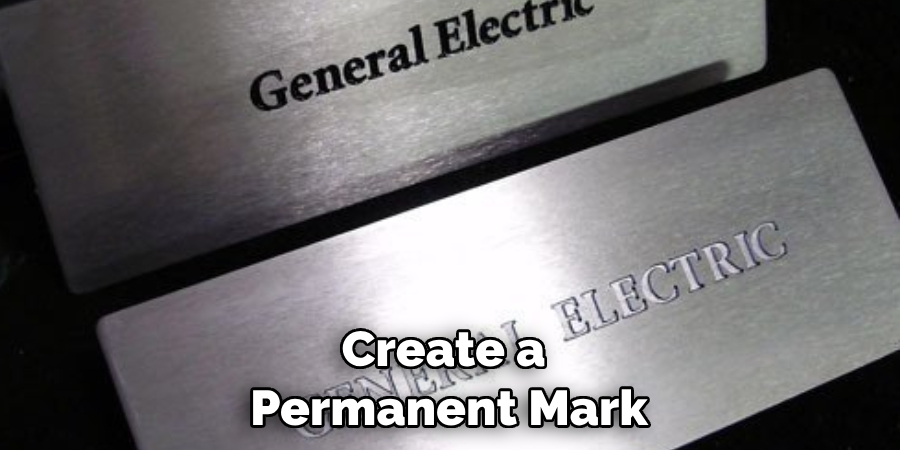
The appeal of acid etching lies in its ability to produce highly detailed and textured marks, offering a distinct visual quality that sets it apart from other marking techniques. It can be particularly effective for creating artistic designs or patterns on metalwork where a textured finish is desired.
This method requires utmost caution due to the hazardous nature of the chemicals involved. Ensuring a safe working environment is paramount, including proper ventilation, the use of personal protective equipment (PPE) such as gloves and eye protection, and adherence to strict protocols for handling and disposing of the etching solution.
Additionally, acid etching demands a comprehensive understanding of the chemical interactions with different metals to achieve the desired results without compromising material integrity.
Both laser engraving and acid etching present sophisticated means of permanent marking, each with its own set of advantages and considerations. While they require specialized equipment and expertise, often necessitating professional services, the distinctive and lasting marks they produce make them invaluable methods in the field of metalworking.
That’s it! You’ve now learned how to write on metal permanently using various methods, from hand stamping to advanced techniques like laser engraving and acid etching. Each method offers its unique advantages and considerations, giving you the flexibility to choose the one that best suits your project’s specific requirements. So go ahead and start creating beautiful, permanent marks on metal for all your industrial or artistic endeavors!
Finishing Touches and Additional Considerations
Cleaning and Polishing:
After the engraving or stamping process, cleaning the marked area is crucial to remove any debris or residue left behind. This step not only ensures the clarity and visibility of the design but also prevents any small particles from causing damage or corrosion over time.
Optional polishing steps can be taken for those looking to further enhance the appearance of the metal surface. Polishing the metal not only brings out a shine but also smooths out any minor imperfections on the surface, providing a professional finish to the marked item.
Protective Coatings:
Applying a clear coat or other protective finishes is highly recommended to extend the life and preserve the appearance of metal items, especially those destined for outdoor use. These coatings serve as a barrier against moisture, UV light, and pollutants, significantly reducing the risk of corrosion and wear.
Protective finishes are particularly beneficial for metals prone to rust or tarnish, ensuring that the engraved or stamped marks remain clear and legible for years to come. Selection of the appropriate type of coating depends on the metal type, the environmental conditions it will be exposed to, and the desired aesthetic outcome.
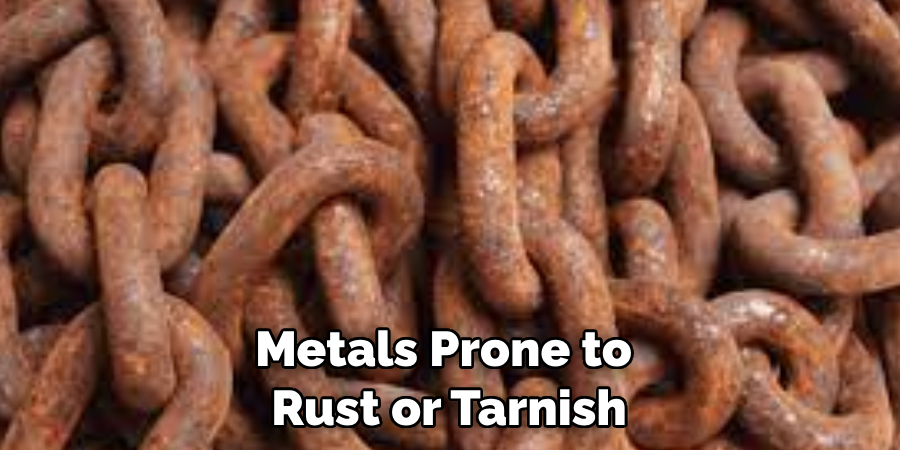
Safety and Environmental Concerns:
Working with tools, lasers, or chemicals during the metal marking process mandates a conscientious approach to safety and environmental stewardship. It’s imperative to employ safe practices, including the use of appropriate personal protective equipment (PPE), to safeguard against injuries and exposure to harmful substances.
Also, proper disposal of any hazardous materials or waste should strictly adhere to local regulations. This ensures the safety of the individual performing the work and minimizes the environmental impact, promoting a safer and more sustainable approach to metalworking.
Conclusion
In conclusion, learning how to write on metal permanently involves considering various factors, including selecting the right method, whether it’s laser engraving for precision and detail or acid etching for a distinct textured finish. Key steps include understanding each technique’s unique advantages and limitations, preparation of the metal surface, and execution with precision.
It’s imperative to also prioritize safety precautions, especially when working with high-powered lasers or corrosive chemicals. Equally important is the final cleanup and application of protective coatings to preserve the engraving or etching. This careful planning and consideration ensure that the chosen method meets the user’s specific needs and skill level, resulting in a professional and long-lasting mark on metal surfaces.
About the Author
Adrien Rowe, an expert in knitting, fiber arts, and bookbinding, promotes sustainability and creativity through workshops and tutorials. Passionate about education and community, he inspires crafters of all levels to learn, share, and grow in a supportive, idea-driven environment.
Professional Focus
Specializes in advanced knitting techniques, fiber manipulation, and textile innovation.
Expert in book arts, including cotton papermaking, handmade paper techniques, and bookbinding.
Dedicated to educating and inspiring crafters of all skill levels through tutorials, workshops, and hands-on learning experiences.
Passionate about creating a supportive community where makers can share ideas, learn, and grow.
Education History
Rhode Island School of Design (RISD) – Bachelor of Fine Arts (BFA) in Textiles.
University of Iowa Center for the Book – Master of Fine Arts (MFA) in Book Arts.
Expertise:
Advanced knitting, fiber manipulation, papermaking, bookbinding, sustainability-focused crafting, educational workshops, creative tutorials, and fostering a supportive maker community.
